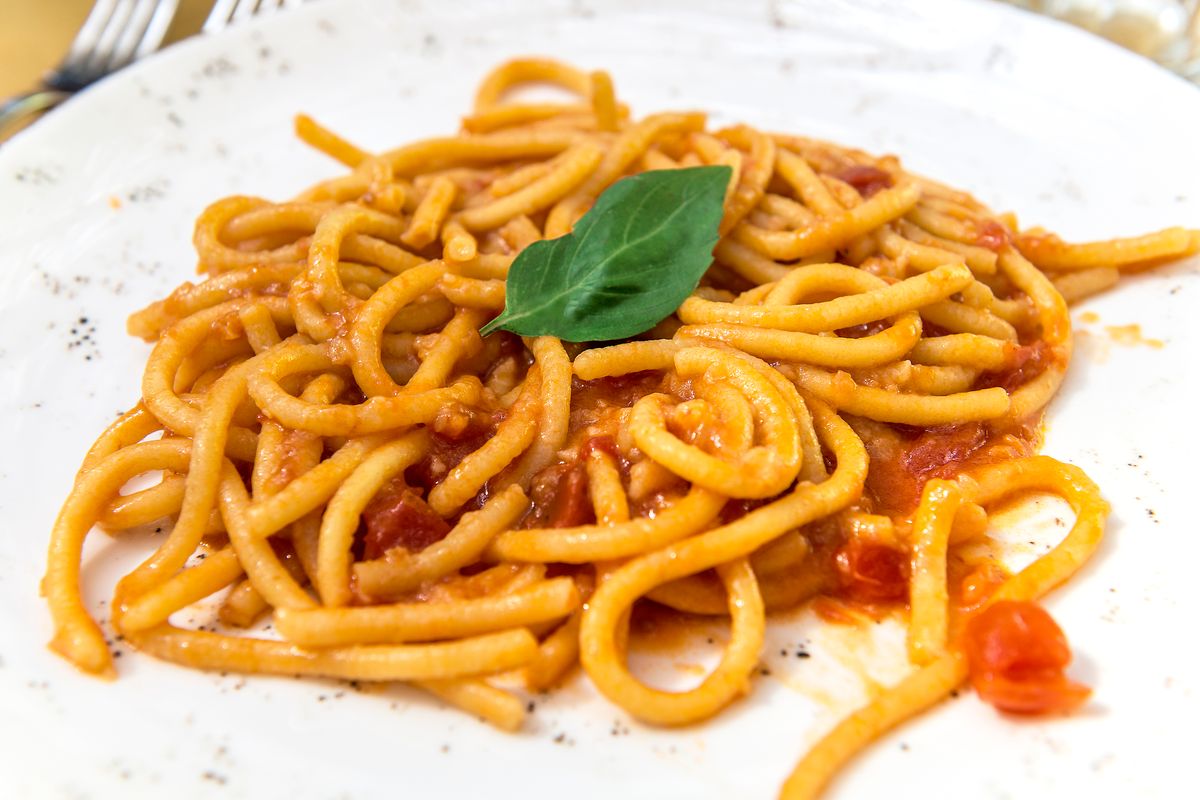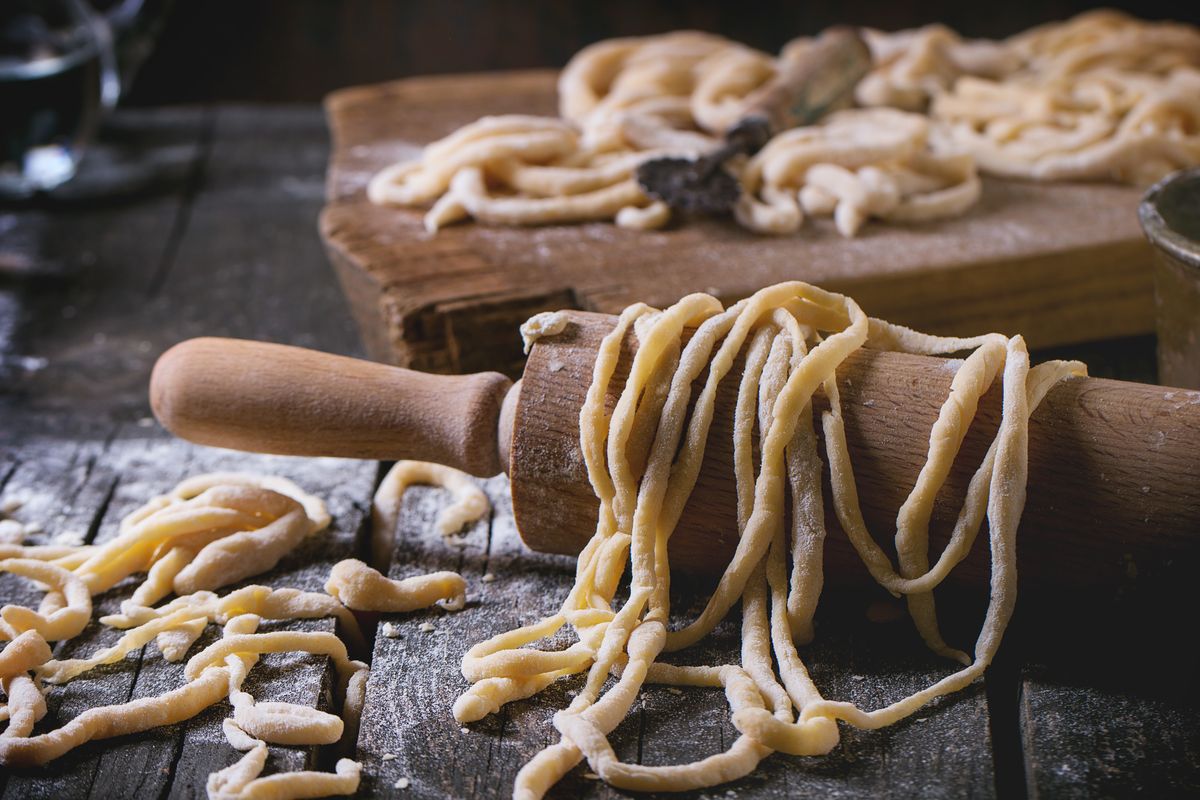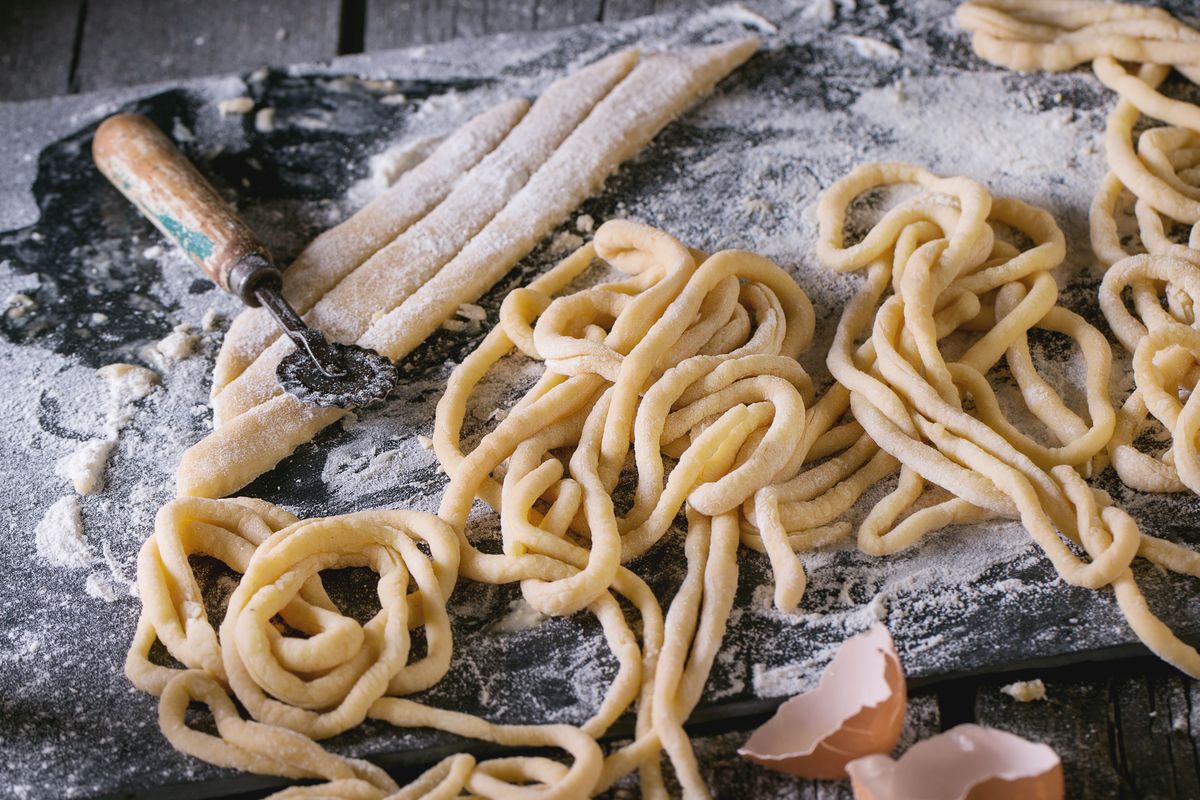Recipes
Pici all’aglione


This is how the authentic pici all'aglione from Valdichiana is prepared, a typical dish of Tuscan cuisine.
Pici are a type of pasta typical of central Italy and widespread in the area between Tuscany, Umbria and Lazio. However, it is in Tuscany that they found fertile ground and delicious ingredients capable of supporting their body. This is the case of pici all'aglione, a first course made with few ingredients but capable of conquering even the most demanding palates.
The reason is one and only one: the quality of the raw materials . In fact, Aglione is a variety of garlic typical of Valdichiana characterized by a delicate flavor and large cloves. Together with tomatoes and a few other ingredients it is able to create a rustic and tasty dish.

How to prepare the pici all'aglione recipe
- First prepare the pici . Place the flour in a mound on the pastry board and pour a spoonful of oil and a teaspoon of salt in the centre. Start adding the water little by little, incorporating the flour with a fork. As soon as the dough takes consistency, work it vigorously by hand on the pastry board. Form a loaf and let it rest under an inverted bowl for 30 minutes .
- In the meantime , prepare the garlic sauce . Peel the garlic cloves and crush them with the appropriate tool to obtain the pulp . Alternatively you can chop them finely with a knife or blend them with a little oil in a blender.
- Heat the oil in a pan and add the garlic pulp. The original recipe doesn't include it but if you want at this point you can also add a pinch of chilli pepper.
- Let the garlic cook over a low heat until it has melted . It must not brown or burn.
- Then add the white wine and once the alcohol has evaporated, add the diced tomato pulp. Season with salt and cook for at least 20 minutes until you obtain a thick sauce.
- Cook the pici in plenty of salted water and drain them when they float to the surface, adding them to the pan with the sauce. Serve them piping hot.
If instead of using homemade pici you prefer to opt for a ready-made product, read carefully the cooking times which are usually very long for this type of pasta (about 18-20 minutes to have them al dente).
We used tomato pulp but peeled tomatoes cut into chunks or tomatoes without the skin and seeds and then cut into cubes are also fine. When they are in season, this is certainly the best choice and to peel them effortlessly, simply cut the pulp at the base with an X-shaped cut, blanch them for 2 minutes and then cool them in water and ice.
If you want, you can also flavor the sauce with basil as seen in this video and use the tomatoes without peeling them. We wanted to do things right and trust me, it was worth it.
Another recipe absolutely worth trying ispici cacio e pepe , the perfect marriage between Tuscany and Lazio directly at the table.
Conservation
Still to be cooked, pici and seasoning will keep in the refrigerator for 3-4 days. Seasoned, pici all'aglione will keep for a couple of days. When it's time to heat them, toss them in a pan with a drizzle of oil and if they form a crust they will be even better.
What is aglione?
Aglione is a variety of garlic grown in southern Tuscany. The one in Valdichiana was declared a Slowfood presidium and, starting from the 1990s, its cultivation was rediscovered. However, it remains a valuable product and difficult to find outside of that area and it's a real shame.
With its sweet and delicate flavor , it is also called the garlic of the kiss. Its "heads" can weigh almost a kilogram, have a color that varies from white to ivory, a rounded shape and each of them contains on average 6 segments of considerable size.
The difference between garlic and garlic is substantial: the former in fact has a pungent flavour, is small in size and each head contains many more cloves. We do not recommend replacing the garlic in this recipe, you would not get the same result.
Pici: from the Etruscans to today
Pici are a pasta shape of very ancient origin. The first testimony is found on the Tomb of the Leopardi, from the Etruscan era and dating back to the 5th century. In the depiction of a wedding banquet it is easy to see a long and coarse pasta shape, the ancestor of modern pici.
From the Viterbo area, pici spread first to Valdichiana and then throughout Tuscany and owe their name to the gesture used to give them the shape of long spaghetti: appiciare .
Riproduzione riservata © - WT












